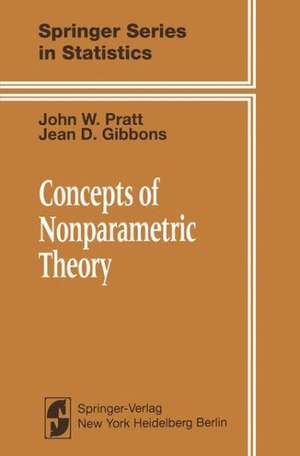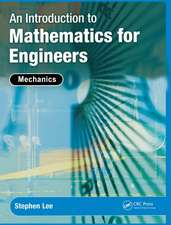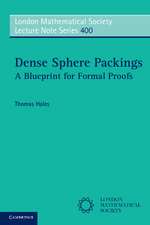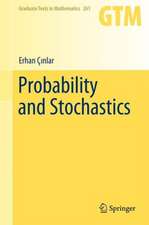Concepts of Nonparametric Theory: Springer Series in Statistics
Autor J.W. Pratt, J.D. Gibbonsen Limba Engleză Paperback – 10 feb 2012
Din seria Springer Series in Statistics
- 14%
 Preț: 679.60 lei
Preț: 679.60 lei - 20%
 Preț: 630.97 lei
Preț: 630.97 lei - 20%
 Preț: 816.43 lei
Preț: 816.43 lei - 20%
 Preț: 1000.84 lei
Preț: 1000.84 lei -
 Preț: 390.84 lei
Preț: 390.84 lei - 20%
 Preț: 697.13 lei
Preț: 697.13 lei - 20%
 Preț: 445.20 lei
Preț: 445.20 lei - 20%
 Preț: 881.51 lei
Preț: 881.51 lei - 18%
 Preț: 1237.14 lei
Preț: 1237.14 lei - 18%
 Preț: 967.22 lei
Preț: 967.22 lei - 18%
 Preț: 956.50 lei
Preț: 956.50 lei - 18%
 Preț: 794.25 lei
Preț: 794.25 lei - 15%
 Preț: 648.05 lei
Preț: 648.05 lei - 18%
 Preț: 1222.49 lei
Preț: 1222.49 lei - 15%
 Preț: 646.11 lei
Preț: 646.11 lei - 15%
 Preț: 647.08 lei
Preț: 647.08 lei - 15%
 Preț: 646.11 lei
Preț: 646.11 lei - 18%
 Preț: 1389.62 lei
Preț: 1389.62 lei - 15%
 Preț: 652.81 lei
Preț: 652.81 lei - 18%
 Preț: 1114.52 lei
Preț: 1114.52 lei - 18%
 Preț: 952.40 lei
Preț: 952.40 lei - 18%
 Preț: 1393.27 lei
Preț: 1393.27 lei - 18%
 Preț: 1561.68 lei
Preț: 1561.68 lei - 18%
 Preț: 1231.47 lei
Preț: 1231.47 lei - 15%
 Preț: 513.64 lei
Preț: 513.64 lei - 18%
 Preț: 893.71 lei
Preț: 893.71 lei - 15%
 Preț: 649.87 lei
Preț: 649.87 lei - 18%
 Preț: 1007.65 lei
Preț: 1007.65 lei - 18%
 Preț: 1111.67 lei
Preț: 1111.67 lei - 18%
 Preț: 1229.10 lei
Preț: 1229.10 lei - 18%
 Preț: 892.74 lei
Preț: 892.74 lei - 18%
 Preț: 913.26 lei
Preț: 913.26 lei - 18%
 Preț: 943.88 lei
Preț: 943.88 lei -
 Preț: 391.61 lei
Preț: 391.61 lei -
 Preț: 391.22 lei
Preț: 391.22 lei - 18%
 Preț: 1391.04 lei
Preț: 1391.04 lei -
 Preț: 390.84 lei
Preț: 390.84 lei - 18%
 Preț: 893.84 lei
Preț: 893.84 lei - 18%
 Preț: 960.61 lei
Preț: 960.61 lei - 18%
 Preț: 1245.34 lei
Preț: 1245.34 lei - 18%
 Preț: 964.54 lei
Preț: 964.54 lei - 15%
 Preț: 643.16 lei
Preț: 643.16 lei - 18%
 Preț: 1674.70 lei
Preț: 1674.70 lei - 15%
 Preț: 643.84 lei
Preț: 643.84 lei - 15%
 Preț: 586.37 lei
Preț: 586.37 lei - 18%
 Preț: 1004.99 lei
Preț: 1004.99 lei - 15%
 Preț: 643.34 lei
Preț: 643.34 lei - 18%
 Preț: 806.40 lei
Preț: 806.40 lei - 18%
 Preț: 727.66 lei
Preț: 727.66 lei
Preț: 398.92 lei
Nou
Puncte Express: 598
Preț estimativ în valută:
76.33€ • 79.90$ • 63.53£
76.33€ • 79.90$ • 63.53£
Carte tipărită la comandă
Livrare economică 31 martie-14 aprilie
Preluare comenzi: 021 569.72.76
Specificații
ISBN-13: 9781461259336
ISBN-10: 1461259339
Pagini: 484
Ilustrații: 462 p.
Dimensiuni: 155 x 235 x 30 mm
Greutate: 0.67 kg
Ediția:Softcover reprint of the original 1st ed. 1981
Editura: Springer
Colecția Springer
Seria Springer Series in Statistics
Locul publicării:New York, NY, United States
ISBN-10: 1461259339
Pagini: 484
Ilustrații: 462 p.
Dimensiuni: 155 x 235 x 30 mm
Greutate: 0.67 kg
Ediția:Softcover reprint of the original 1st ed. 1981
Editura: Springer
Colecția Springer
Seria Springer Series in Statistics
Locul publicării:New York, NY, United States
Public țintă
ResearchCuprins
1 Concepts of Statistical Inference and the Binomial Distribution.- 1 Introduction.- 2 Probability Distributions.- 3 Estimators and their Properties.- 4 Hypothesis Testing.- 5 Randomized Test Procedures.- 6 Confidence Regions.- 7 Properties of One-Tailed Procedures.- 8 Choice of Two-Tailed Procedures and their Properties.- 9 Appendices to Chapter 1.- Problems.- 2 One-Sample and Paired-Sample Inferences Based on the Binomial Distribution.- 1 Introduction.- 2 Quantile Values.- 3 The One-Sample Sign Test for Quantile Values.- 4 Confidence Procedures Based on the Sign Test.- 5 Interpolation between Attainable Levels.- 6 The Sign Test with Zero Differences.- 7 Paired Observations.- 8 Comparing Proportions using Paired Observations.- 9 Tolerance Regions.- Problems.- 3 One-Sample and Paired-Sample Inferences Based on Signed Ranks.- 1 Introduction.- 2 The Symmetry Assumption or Hypothesis.- 3 The Wilcoxon Signed-Rank Test.- 4 Confidence Procedures Based on the Wilcoxon Signed-Rank Test.- 5 A Modified Wilcoxon Procedure.- 6 Zeros and Ties.- 7 Other Signed-Rank Procedures.- 8 Invariance and Signed-Rank Procedures.- 9 Locally Most Powerful Signed-Rank Tests 181 Problems.- 4 One-Sample and Paired-Sample Inferences Based on the Method of Randomization.- 1 Introduction.- 2 Randomization Procedures Based on the Sample Mean and Equivalent Criteria.- 3 The General Class of One-Sample Randomization Tests.- 4 Most Powerful Randomization Tests.- 5 Obervation-Randomization versus Rank-Randomization Tests.- Problems.- 5 Two-Sample Rank Procedures for Location.- 1 Introduction.- 2 The Shift Assumption.- 3 The Median Test, Other Two-Sample Sign Tests, and Related Confidence Procedures.- 4 Procedures Based on Sums of Ranks.- 5 Procedures Based on Sums of Scores.- 6 Two-Sample Rank Tests and theY — X Differences.- 7 Invariance and Two-Sample Rank Procedures.- 8 Locally Most Powerful Rank Tests.- Problems.- 6 Two-Sample Inferences Based on the Method of Randomization.- 1 Introduction.- 2 Randomization Procedures Based on the Difference Between Sample Means and Equivalent Criteria.- 3 The Class of Two-Sample Randomization Tests.- 4 Most Powerful Randomization Tests.- Problems.- 7 Kolmogorov-Smirnov Two-Sample Tests.- 1 Introduction.- 2 Empirical Distribution Function.- 3 Two-Sample Kolmogorov-Smirnov Statistics.- 4 Null Distribution Theory.- 5 Ties.- 6 Performance.- 7 One-Sample Kolmogorov-Smirnov Statistics.- Problems.- 8 Asymptotic Relative Efficiency.- 1 Introduction.- 2 Asymptotic Behavior of Tests: Heuristic Discussion.- 3 Asymptotic Behavior of Point Estimators: Heuristic Discussion.- 4 Asymptotic Behavior of Confidence Bounds.- 5 Example.- 6 Definitions of Asymptotic Relative Efficiency.- 7 Pitman’s Formula.- 8 Asymptotic Relative Efficiencies of One-Sample Procedures for Shift Families.- 9 Asymptotic Relative Efficiency of Procedures for Matched Pairs.- 10 Asymptotic Relative Efficiency of Two-Sample Procedures for Shift Families.- 11 Asymptotic Efficiency of Kolmogorov-Smirnov Procedures.- Problems.- Tables.- Table A Cumulative Standard Normal Distribution.- Table B Cumulative Binomial Distribution.- Table C Binomial Confidence Limits.- Table D Cumulative Probabilities for Wilcoxon Signed-Rank Statistic.- Table E Cumulative Probabilities for Hypergeometric Distribution.- Table F Cumulative Probabilities for Wilcoxon Rank Sum Statistic.- Table G Kolmogorov-Smirnov Two-Sample Statistic.



















